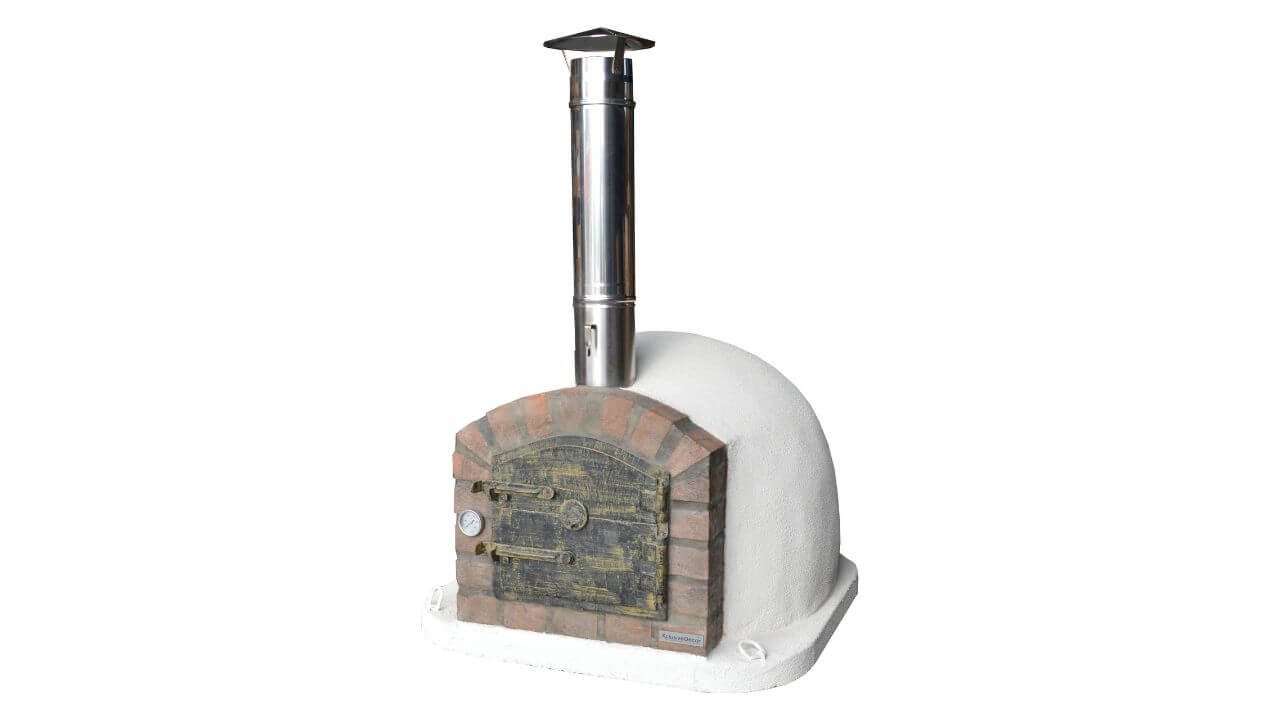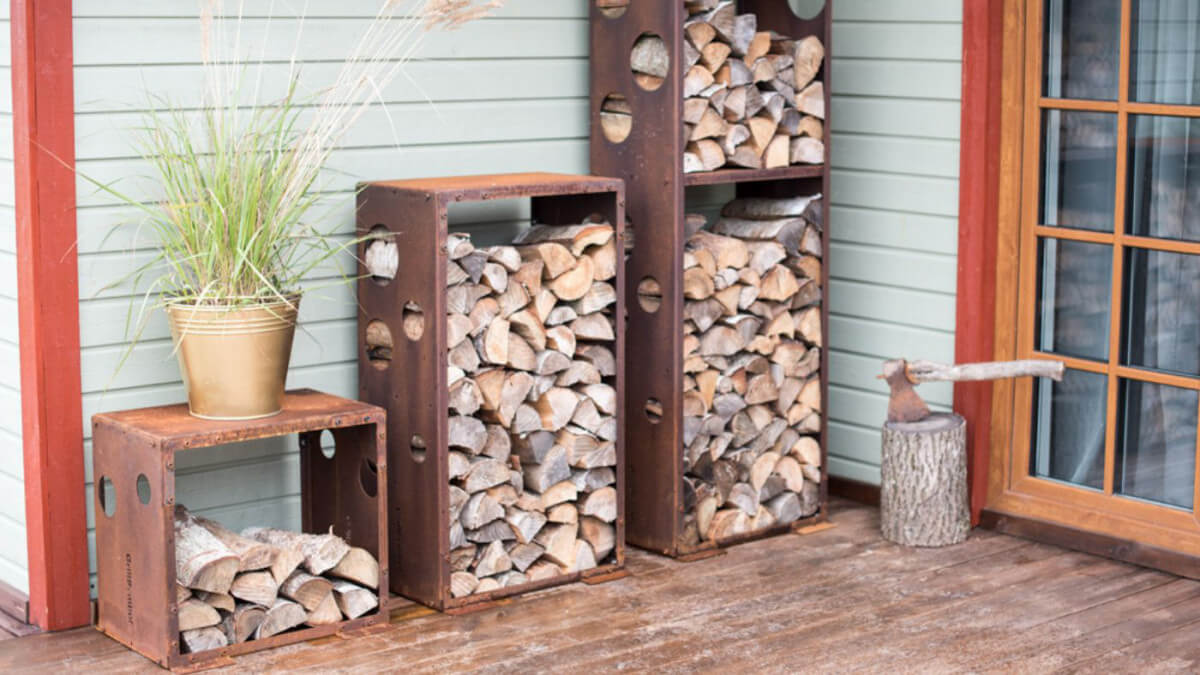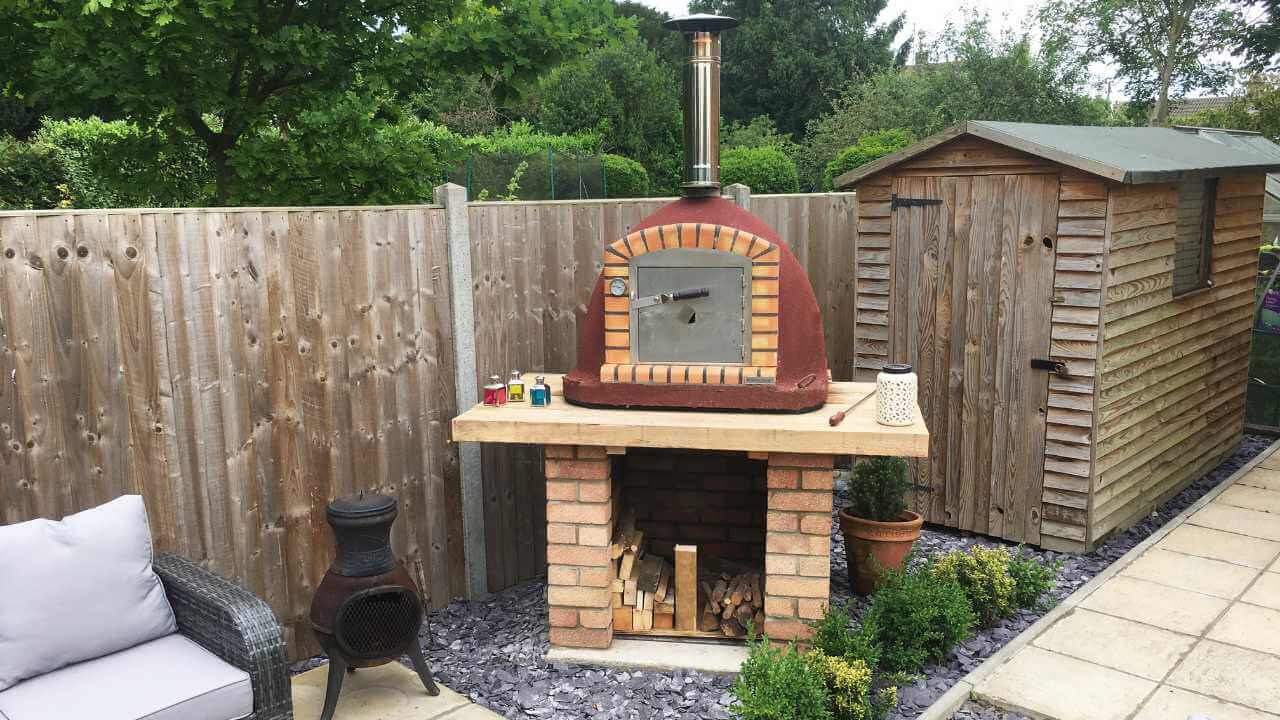Best Wood for Pizza Oven: A Guide to Choosing the Right Firewood
Cooking a delicious, crispy, perfectly cooked pizza in a wood-fired pizza oven is an art. One that requires you to use the right tools and materials to achieve the best results.
One of the key ingredients in this recipe is choosing the suitable wood. This is because the type of wood you use greatly impacts the heat output, cooking speed, and flavour of your pizza.
This guide will give you everything you need to know to choose the best wood for a pizza oven.
We also have a guide to help you choose the best outdoor pizza oven.
Starting The Fire
When starting a fire in a pizza oven for cooking, it's important to use a fire starter that is safe and does not release harmful chemicals into the food.
Some common and safe options for fire starters in a pizza oven include:
-
Dry, crumpled newspaper
-
Wax fire starters
-
Charcoal starters
-
Fatwood, a natural fire starter made from the resin of pine trees
Avoid using lighter fluid, gasoline, or other flammable liquids as these can release toxic fumes and contaminate the food being cooked.
Kindling
For kindling in a pizza oven, it is best to use dry, seasoned hardwoods such as oak, maple, ash, or hickory.
Softwoods like pine or cedar should be avoided as they contain a lot of resin that can cause excess smoke and flavour the food.
How Much Wood To Use?
When it comes to cooking pizza in your oven, the right amount of wood is key to ensuring a delicious outcome. But, don't worry - figuring out how much wood you need is simple and straightforward! Here's what you need to know:
The Ideal Length of Pizza Oven Wood: To get your fire going and bring your oven up to temperature, it's recommended to start with 5 small pieces of wood that are about 12 inches long. This size of wood is easy to handle and will provide enough heat to get your oven ready for cooking.
The heat retention of your oven is another factor to consider when determining how much wood you need.
Ovens with better heat retention, like brick ovens, will require less wood to maintain the temperature, while stainless steel ovens may need a little more. Keep an eye on the fire and add wood as needed to ensure that the oven stays at the right temperature.
How Do I Know The Pizza Oven Is Up To Temperature?
To know if your wood fired pizza oven is up to temperature, you can use a few different methods. One common method is to use a thermometer specifically designed for ovens, a thermometer gun is inexpensive, accurate and very easy to use. These thermometers measure the temperature of the oven floor or dome, where the pizza will be cooking.
There are many different types of outdoor wood fire pizza oven accessories that will help with creating a perfect fire. A Blow, Oven Gloves and a long-handled brush are just a few. We have a selection of Pizza Oven Accessories to help.
Be careful using the following method, and don’t touch any part of the pizza oven. Another way to check if your oven is up to temperature is by using the hand test. Hold your hand about 6 inches above the oven floor. If you can only keep it there for 1 to 2 seconds, the oven is around 500°F - 550°F, which is the ideal temperature for cooking pizza.
Monitoring The Fire:
To ensure that your pizza turns out perfectly, it's important to monitor the fire and add wood as needed.
It's important to keep an eye on the temperature of the oven during cooking, as it may fluctuate and require adjustment.
Unsuitable woods can be difficult to ignite and maintain, making the cooking process a laborious one. This can result in a fire that doesn’t burn hot enough, leaving your pizza doughy and soggy.
Don't be afraid to experiment and see what works best for your oven. With a little practice, you'll soon know exactly how much wood you need to cook the perfect pizza every time!
Why You Should Use Dense, Dry Hardwood In A Pizza Oven
The first and most important factor to consider when choosing wood for your pizza oven is heat. You need a blazing hot oven to cook a pizza to perfection. And the only way to achieve this is by using dense, dry hardwood.
These types of wood are ideal for creating high heat output and consistent heat to cook your pizza evenly and quickly.
Oak and maple are two of the most popular choices for pizza ovens. However, other types of wood are equally suitable for this purpose. We’ll talk about them in the section below.
The type of wood you use for your pizza oven not only affects the heat output but also the flavour of your pizza. Certain woods can infuse your pizza with unique and delicious flavours that enhance the taste.
On the other hand, some woods can produce harsh, bitter flavours that can ruin the taste of your pizza.
It’s important to choose the right type of wood that complements the flavours of your pizza.
Seasoned and Dried Hardwoods for Pizza Ovens:
The best woods for burning in a pizza oven are seasoned and dried hardwoods such as oak, maple, and ash. These woods are denser than softwoods and therefore, give off more heat, making them ideal for wood-burning pizza ovens.
The wood should be fully dry to achieve higher temperatures and burn consistently without excess smoke. Oak is a popular choice due to its availability and hot burn, while maple has a mild, sweet flavour.
Fruitwoods for Pizza Ovens:
Fruitwoods, such as pecan, apple, and plum, can also be added to a pizza oven for extra flavour.
These woods do not burn as hot as hardwoods and are best used sparingly and mixed with oak or another hardwood. Apple is a popular choice due to its high burn temperature and mild flavour.
Popular Firewoods for Pizza Ovens:
Oak: Oak wood imparts a mild, slightly smoky flavour to the pizza. It burns hot and evenly, making it a popular choice for pizza ovens.
Maple: Maple wood has a slightly sweeter flavour that complements the flavours of the pizza toppings. It burns hot and produces a mild smoke, adding a light smoky flavour to the pizza.
Cherry: Cherry wood has a mild, slightly sweet flavour that complements the natural sweetness of the pizza sauce. It burns hot and produces a light smoke, lending a gentle smoky flavour to the pizza.
Apple: Apple wood has a slightly sweet, fruity flavour that pairs well with the sweetness of the pizza sauce. It burns hot and produces a mild smoke, imparting a light smoky flavour to the pizza.
Hickory: Hickory wood has a strong, smoky flavour that can be overpowering if used in excess. It's best used in small amounts to add a rich smoky flavour to the pizza.
Mesquite: Mesquite wood imparts a bold, smoky flavour to the pizza. It burns hot and produces a lot of smoke, so it's best used in small amounts to add depth to the flavour of the pizza.
How to Choose the Right Wood for Your Pizza Oven and Properly Store It
When it comes to cooking up a delicious pizza in a wood-fired oven, the type of wood you use can play a big role in the final outcome.
To get that perfect crispy crust, it's important to avoid certain woods and stick to kiln-dried hardwoods for the best results.
Avoid Wood with High Sap Content:
Woods that have a high sap content should be avoided as they release creosote, a toxic by-product of wood combustion, which can build up in the pizza oven over time.
Softwoods can be used, but only after they have been seasoned and cured to reduce their sap content and remove the bark.
Avoid Woods with High Moisture Content:
Wood that has not thoroughly dried out should not be used in a pizza oven. Pizzas require a high temperature for a short cooking time, and wood with a high moisture content will not be able to generate enough heat, leading to a soggy pizza instead of a crisp crust.
Burning damp wood also creates a lot of smoke and low heat, which can cause creosote build-up in your oven. To ensure your wood is ready to use, use a moisture meter to ensure that it has reached the 20% moisture benchmark.
Avoid Woods that are Too Dry:
Wood that has a moisture level under 15% is considered too dry for use in wood-fired ovens.
This type of wood creates excess smoke and creosote and burns too fast, making it difficult to control the fire. If you have offcuts that are too dry, you can mix them in bit by bit with your regular firewood to increase the moisture levels.
Avoid Treated Woods:
Laminated wood, treated wood, or any wood with traces of paint, glue, or chemicals should be avoided at all costs. These woods burn unpredictably and dangerously, and release harmful particles when burned.
If you're unsure about the provenance of a wood, it's best to avoid it to prevent ingesting potentially harmful toxins.
Make sure you use wood that you have harvested yourself or bought from a legitimate supplier.
In conclusion, the best wood for your pizza oven is kiln-dried hardwood due to its dense construction that allows for a long, high burn.
Properly choosing and storing your wood is an essential step towards achieving pizza perfection in your wood-fired oven.
Frequently Asked Questions
Can I Use A Pizza Oven For Cooking Other Foods Besides Pizza?
Yes, you can use a pizza oven for cooking other foods besides pizza, such as meat, vegetables, bread, etc. The high temperature and the ability to cook food directly on the stone floor make it versatile for many cooking styles.
Many pizza ovens have doors, close and the heat is retained just like a regular oven. Suitable for baking that dessert!
How Do I Maintain And Clean My Pizza Oven?
To maintain and clean your pizza oven, you should clean the interior and exterior of the oven regularly, and keep the door and chimney clear of any debris.
You should also check the gaskets and seals, and replace them if necessary.
Is It Safe To Use A Wood-Fired Pizza Oven Indoors?
No, it is not safe to use a wood-fired pizza oven indoors because they produce carbon monoxide, a colourless and odourless gas that can be lethal in large quantities.
It is recommended to only use wood-fired pizza ovens outdoors, in well-ventilated areas.
Can I Use My Pizza Oven In Any Weather Conditions?
It is recommended to use a pizza oven in dry weather conditions to avoid moisture entering the oven, which can cause damage and affect the cooking performance.
You should also take extra care when using it in strong winds, as this can cause sparks and ash to fly out of the oven.
Is It Necessary To Preheat The Oven Before Cooking A Pizza?
Yes, it is necessary to preheat the oven before cooking a pizza. Preheating helps to ensure that the pizza cooks evenly and to the desired temperature.
The preheating time depends on the type and size of the oven, but it typically takes 30 minutes to an hour.





